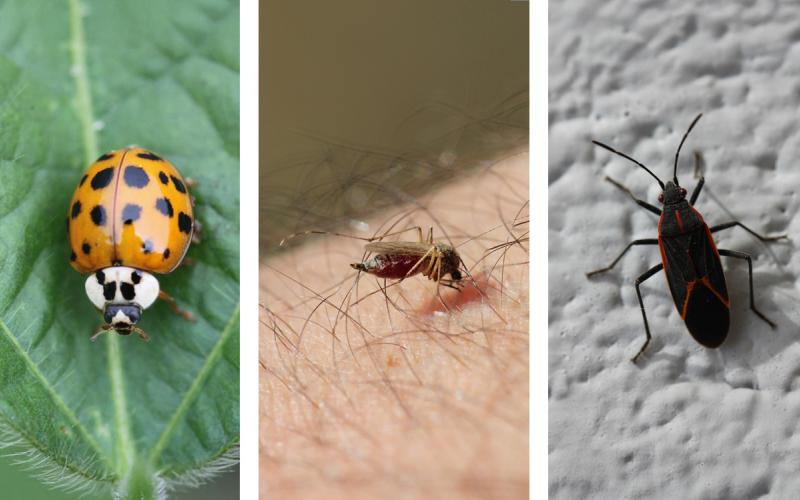Originally Submitted: June 6, 2019
It finally warmed up and the insects have definitely become more active. However, our calculations indicate that not enough degree days have been accumulated for common stalk borer activity to warrant any scouting, but spraying field edges should be avoided through most of South Dakota in the next week. Spraying field edges and killing current common stalk borer hosts will force the caterpillars to move to corn fields earlier than usual. This can result in greater infestations and reduced stands around the field. We will continue to monitor the degree days and provide updates.
Predicting Common Stalk Borer Migration Into Corn Fields With Degree Days
The hatching and movement of common stalk borer caterpillars can be estimated by using degree days with a developmental threshold of 41°F. Common stalk borer eggs typically begin to hatch at 575 degree days. The caterpillars finish hatching and begin development on weeds and grasses at 750 degree days. At 1300 degree days, 10% of the caterpillars will begin moving to corn. At this point corn should begin to be scouted. At 1400 degree days, 50% of the caterpillars will or have moved into corn.
As a reminder, the equation for degree days is:
(Maximum Daily Temperature + Minimum Daily Temperature) ÷ 2 - The Developmental Threshold
In South Dakota, most of the state is still between conditions approaching egg hatch and egg hatch occurring. No scouting is necessary for common stalk borer at this time. We will continue to update this information.
| Accumulated Degree Days |
Common Stalk Borer Caterpillar Activity |
Recommendation |
|---|---|---|
| 0-574 | Conditions favorable for egg hatch. | No scouting necessary. |
| 575-749 | Eggs begin to hatch. | No scouting necessary. |
| 750-1299 | Young caterpillars begin boring into grass and weeds. | No scouting necessary. Avoid spraying grass and weeds along field edges. |
| 1300-1399 | 10% of caterpillars begin moving into adjacent corn. | Begin scouting field edges for defoliation. |
| 1400-1700 | 50% of caterpillars moving into adjacent corn. | Continue scouting for defoliation along field edges. Spray if necessary. |
| Location |
Since January 1, 2019 |
Recommendation |
|---|---|---|
| Buffalo |
|
No scouting necessary. Avoid spraying field edges. |
| Newell |
|
No scouting necessary. |
| Rapid City |
|
No scouting necessary. Avoid spraying field edges. |
| Hot Springs |
|
No scouting necessary. Avoid spraying field edges. |
| Lemmon |
|
No scouting necessary. |
| Faith |
|
No scouting necessary. |
| Cottonwood |
|
No scouting necessary. Avoid spraying field edges. |
| Mission |
|
No scouting necessary. Avoid spraying field edges. |
| Selby |
|
No scouting necessary. |
| Gettysburg |
|
No scouting necessary. |
| Pierre |
|
No scouting necessary. Avoid spraying field edges. |
| Winner |
|
No scouting necessary. Avoid spraying field edges. |
| Aberdeen |
|
No scouting necessary. Avoid spraying field edges. |
| Huron |
|
No scouting necessary. Avoid spraying field edges. |
| Mitchell |
|
No scouting necessary. Avoid spraying field edges. |
| Tyndall |
|
No scouting necessary. Avoid spraying field edges. |
| Sisseton |
|
No scouting necessary. |
| Brookings |
|
No scouting necessary. |
| Vermillion |
|
No scouting necessary. Avoid spraying field edges. |


